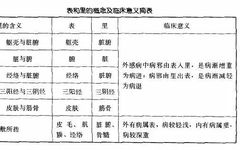The Balance and Imbalance of Yin and Yang
The concept of Yin and Yang is extensively used in Traditional Chinese Medicine (TCM), so understanding the meaning of “Yin” and “Yang” is essential for studying TCM. The Balance and Imbalance of Yin and Yang The balance of Yin and Yang is a traditional Chinese concept that can be used to explain various phenomena, not … Read more










